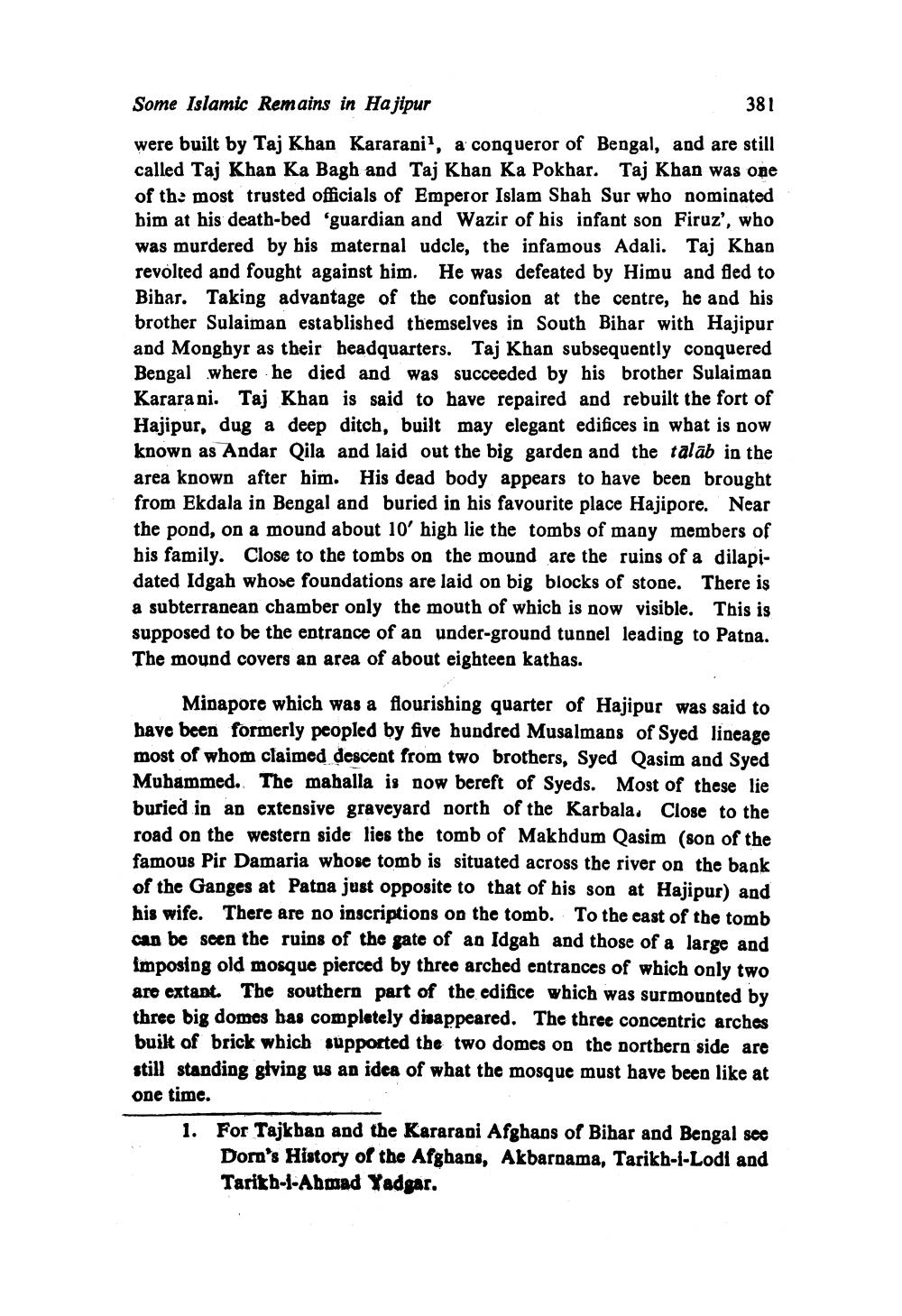________________ Some Islamic Remains in Hajipur 381 were built by Taj Khan Kararani', a conqueror of Bengal, and are still called Taj Khan Ka Bagh and Taj Khan Ka Pokhar. Taj Khan was one of the most trusted officials of Emperor Islam Shah Sur who nominated bim at his death-bed 'guardian and Wazir of his infant son Firuz', who was murdered by his maternal udcle, the infamous Adali. Taj Khan revolted and fought against him. He was defeated by Himu and fled to Bibar. Taking advantage of the confusion at the centre, he and his brother Sulaiman established themselves in South Bihar with Hajipur and Monghyr as their headquarters. Taj Khan subsequently conquered Bengal where he died and was succeeded by his brother Sulaiman Karara ni. Taj Khan is said to have repaired and rebuilt the fort of Hajipur, dug a deep ditch, built may elegant edifices in what is now known as Andar Qila and laid out the big garden and the talab in the area known after him. His dead body appears to have been brought from Ekdala in Bengal and buried in his favourite place Hajipore. Near the pond, on a mound about 10' high lie the tombs of many members of his family. Close to the tombs on the mound are the ruins of a dilapidated Idgah whose foundations are laid on big blocks of stone. There is a subterranean chamber only the mouth of which is now visible. This is supposed to be the entrance of an under-ground tunnel leading to Patna. The mound covers an area of about eighteen kathas. Minapore which was a flourishing quarter of Hajipur was said to have been formerly peopled by five hundred Musalmans of Syed lineage most of whom claimed descent from two brothers, Syed Qasim and Syed Muhammed. The mahalla is now bereft of Syeds. Most of these lie buried in an extensive graveyard north of the Karbala. Close to the road on the western side lies the tomb of Makhdum Qasim (son of the famous Pir Damaria whose tomb is situated across the river on the bank of the Ganges at Patna just opposite to that of his son at Hajipur) and his wife. There are no inscriptions on the tomb. To the east of the tomb can be seen the ruins of the gate of an Idgah and those of a large and imposing old mosque pierced by three arched entrances of which only two are extant. The southern part of the edifice which was surmounted by three big domos bas completely disappeared. The three concentric arches built of brick which supported the two domes on the northern side are still standing giving us an idea of what the mosque must have been like at one time. 1. For Tajkban and the Kararani Afghans of Bihar and Bengal see Dorn's History of the Afghans, Akbarnama, Tarikh-i-Lodi and Tarikh-l-Ahmad Yadgar.




